The SandForce Roundup: Corsair, Kingston, Patriot, OCZ, OWC & MemoRight SSDs Compared
by Anand Lal Shimpi on August 11, 2011 12:01 AM ESTDiffering Firmwares
OCZ's exclusive on the SF-2281 has finally lifted and now we're beginning to see an influx of second generation SandForce drives from other vendors. Make no mistake, although these drives may look different, have creative new names and different PCBs - they should all perform the same if you know what you're comparing.
OCZ sells three lines of SF-2281 based drives: Vertex, Agility and Solid. The Vertex 3 uses synchronous NAND (read: faster), while the Agility 3 and Solid 3 use slower asynchronous NAND.
Other companies are following suit. Asynchronous NAND is more readily available and cheaper, so don't be surprised to find it on drives. So far everyone seems to be following OCZ's footsteps and creating separate lines for the synchronous vs. asynchronous stuff.
The table below should break it down for you:
| SandForce SF-2281 SSD Comparison | ||||||
| Product | NAND Type | Capacities Available | Latest FW Available | Price for 120GB Drive | ||
| Corsair Force GT | Sync IMFT | 60GB, 120GB, 240GB | Corsair v1.3 (SF v3.20?) | $248.49 | ||
| Kingston HyperX | Sync IMFT | 120GB, 240GB | SF v3.20 | $269.99 | ||
| MemoRight FTM Plus | Sync IMFT | 60GB, 120GB, 240GB, 480GB | MR v1.3.1 | N/A | ||
| OCZ Agility 3 | Async IMFT | 60GB, 120GB, 240GB | OCZ v2.11 (SF v3.20) |
$209.99 | ||
| OCZ Vertex 3 | Sync IMFT | 60GB, 120GB, 240GB, 480GB | OCZ v2.11 (SF v3.20) |
$254.99 | ||
| OCZ Vertex 3 MAX IOPS | Toggle | 120GB, 240GB | OCZ v2.11 (SF v3.20) |
$284.99 | ||
| OWC ME Pro 6G | Toggle | 120GB, 240GB, 480GB | SF v3.19 | $279.99 | ||
| OWC ME Pro 6G | Sync IMFT | 120GB, 240GB, 480GB | SF v3.19 | $279.99 | ||
| Patriot Pyro | Async IMFT | 60GB, 120GB, 240GB | SF v3.19 | $209.99 | ||
| Patriot Wildfire | Toggle | 120GB, 240GB, 480GB | SF v3.19 | $284.99 | ||
The four drives we're looking at today are a mixture of synchronous and asynchronous. The newly announced Patriot Pyro uses async NAND while everything else uses some form of synchronous Flash memory. OWC recently switched to using 32nm Toggle NAND in an effort to boost performance to OCZ MAX IOPS levels.
SandForce delivers firmware to all of its partners, however the schedules don't always match up. OCZ gets first dibs and renames its firmware to avoid direct comparisons to other drives. There are cases where OCZ may have some unique features in its firmwares but I don't believe that's the case with its latest revision.
Corsair and MemoRight do the same renaming, while the rest of the players stick to the default SandForce firmware version numbers. Everyone that shipped us drives seems to be sticking to either the latest firmware revision (3.20) or the one prior to it (3.19). Performance hasn't changed too much between all of these revisions, the majority of the modifications are there to squash this BSOD issue.
Corsair Force GT
The Force GT is Corsair's answer to OCZ's Vertex 3. The GT ships with a custom PCB design and is outfitted with IMFT (Micron branded) NAND running in synchronous mode. The 120GB sample we were sent for review has 16 NAND packages each with one 8GB MLC NAND die. Corsair just released its first firmware update for the Force GT, bringing it up to version 1.3 in Corsair-speak. Given the timing of the release, I'm going to assume this is Corsair's rebrand of the SandForce 3.20 firmware.
The Force GT is the cheapest 120GB SF-2281 based drive with synchronous NAND in the roundup. The drive comes with a 3 year warranty from Corsair.
Kingston HyperX
As Kingston's first SandForce SSD, the HyperX looks great. Although it doesn't really matter once you get it in the system, the HyperX enclosure has the most heft to it out of all of the SF-2281 drives we've reviewed. Part of the added weight comes from the two thermal pads that line the top and bottom of the case:
Kingston annoyingly uses 1.5mm hollow hex screws to keep the drive together, our biggest complaint from a physical standpoint. As a standalone drive the HyperX is our second most expensive here at $269.99 for 120GB.
The drive ships with a custom PCB and the latest SandForce firmware (3.20). Kingston sent along the upgrade kit which includes a 3.5" drive sled, USB enclosure, SATA cable and Kingston screwdriver:
MemoRight FTM Plus
We haven't had a MemoRight drive in for review since the early days of SSDs on AnandTech. The FTM Plus is a vanilla SF-2281 drive with SandForce's 3.19 firmware. The PCB design is custom although the NAND configuration is pretty standard. We got a 240GB drive in for review with 16 NAND devices and two 8GB 25nm IMFT die per chip.
OWC Mercury Extreme Pro 6G
The last time we reviewed OWC's Mercury Extreme Pro 6G we were a bit surprised by the presence of a rework on a shipping SSD. Since then a couple of things have changed. For starters, the rework is gone as you can see from the images above. While these drives use standard 25nm IMFT synchronous NAND, OWC has recently switched over to 32nm Toggle NAND - giving the Mercury Extreme Pro 6G the same performance as the MAX IOPS drives from OCZ or the Patriot Wildfire. We don't have the Toggle NAND drives in yet but I'd expect performance similar to the MAX IOPS for the updated drives. The branding and pricing haven't changed, just the performance.
The Mercury Extreme Pro 6G is offered with a 5 year warranty from OWC. It's also the most expensive SF-2281 based on IMFT NAND with a 120GB drive costing $279.99.
Patriot Pyro
While the Wildfire is Patriot's high-end SF-2281 offering, the Pyro is its more cost effective solution. The Pyro's savings come courtesy of its asynchronous NAND, putting it on par with an Agility 3. The Wildfire by comparison is akin to OCZ's MAX IOPS drives. Patriot uses the same PCB layout as OWC. The drive ships with firmware revision 3.19 and a 3-year warranty.
The Test
| CPU | Intel Core i7 2600K running at 3.4GHz (Turbo & EIST Disabled) - for AT SB 2011, AS SSD & ATTO |
| Motherboard: | Intel H67 Motherboard |
| Chipset: | Intel H67 |
| Chipset Drivers: | Intel 9.1.1.1015 + Intel RST 10.2 |
| Memory: | Corsair Vengeance DDR3-1333 2 x 2GB (7-7-7-20) |
| Video Card: | eVGA GeForce GTX 285 |
| Video Drivers: | NVIDIA ForceWare 190.38 64-bit |
| Desktop Resolution: | 1920 x 1200 |
| OS: | Windows 7 x64 |


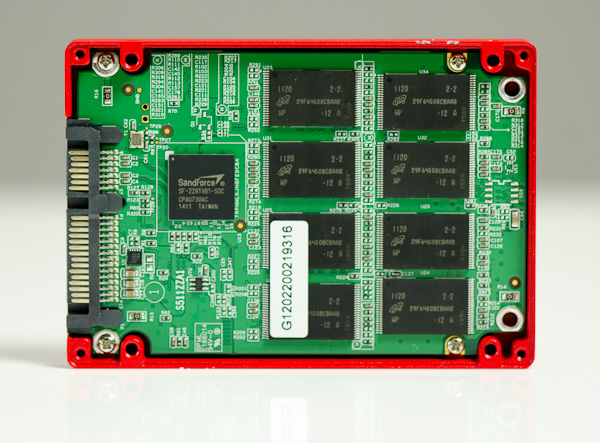



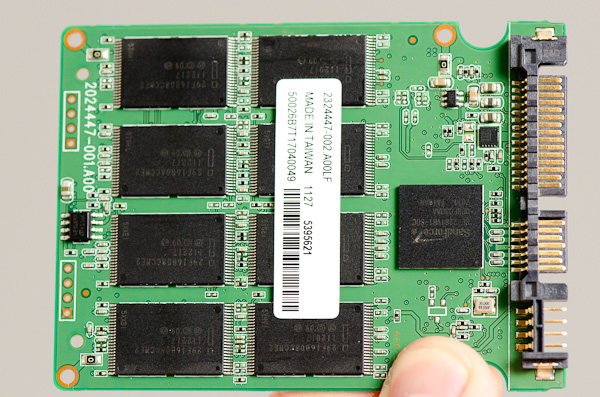
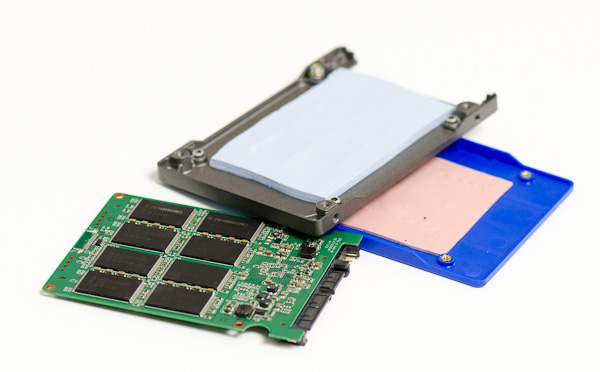
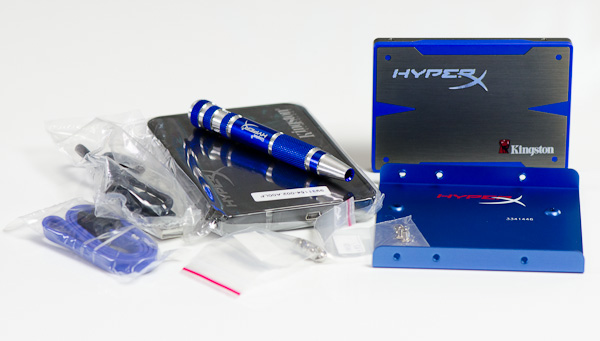






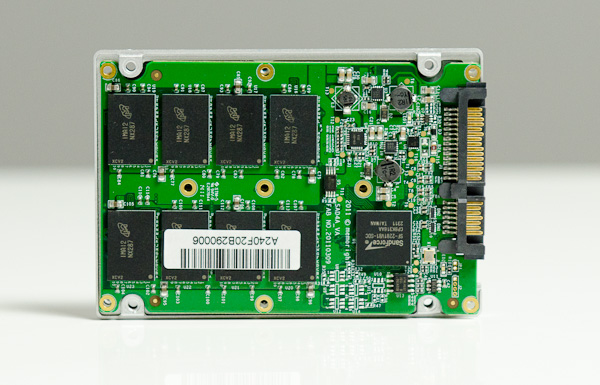




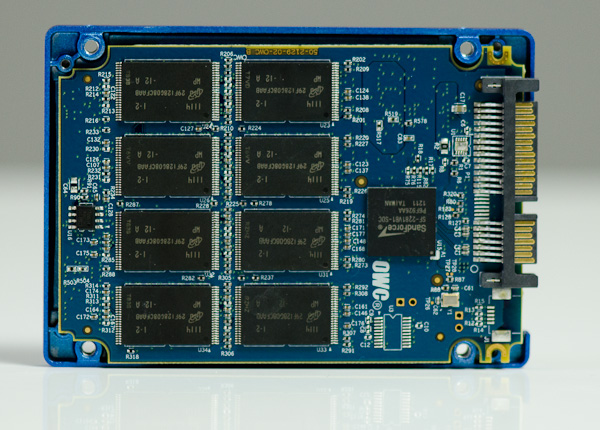
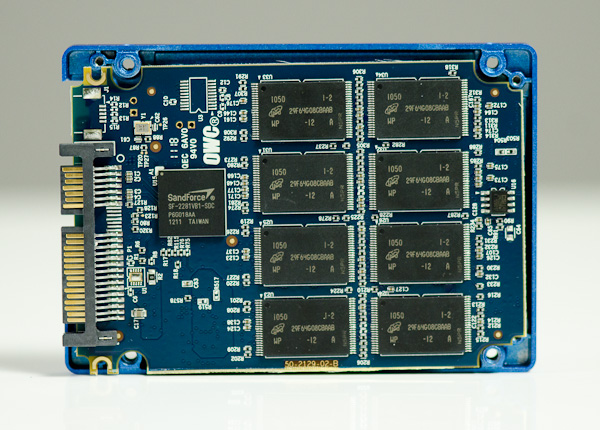


















90 Comments
View All Comments
bernardl - Thursday, August 11, 2011 - link
I am pretty surprised by the little mention of the OWC SSD in your introduction and conclusion. It seems to belong to the top 3 perforers in every single of your tests and their product have proven extremely reliable and durable over the years.I am using 3 of their SSDs (Mac pro boot, mac mini boot and external storage for music server) and have experienced zero issue and stable/fast performance.
Cheers,
Bernard
arntc - Friday, August 12, 2011 - link
I'm not sure if I read correctly between the lines; one should stick to the previous generation of consumer SSD's if your on the prowl for a systemdisk in a notebook?If the 3-dimensional comparison of Price/Performance/Reliability is charted, which SSD would currently come out on top (subjective comments allowed)?
86waterpumper - Friday, August 12, 2011 - link
I just bought the 120mb version of the mercury extreme 6g for my sandy bridge build a few weeks ago. I sure wish I had known they were coming out with faster drives :( Oh well so far no bsod issues, and Ihope I don't see one!
FunBunny2 - Friday, August 12, 2011 - link
My understanding is that NAND is measured in bits because the controllers see the data as bits, not bytes, leveling across available (addressable) dies. Yes?vashtyphoon - Friday, August 12, 2011 - link
Thanks for the article, very informative, but it made me cringe.I just placed an order for a PC build based off of the SandyBridge guide, with the OCZ Vertex 2, but I changed the motherboard to a ASUS P8Z68-V LE, same base model as the setup that caused the BSODs with a vertex 3 on page 2.... Is this going to really miss me up or do the Vertex 2s have a better track record?
Any thoughts?
brakhage - Friday, August 12, 2011 - link
I just got 3 OCZ drives, 2 vertex3 60's, and a Solid3 120. I quickly encountered the BSOD/freeze issue on the 2 60s (OS drives). After extensive research and thread-chasing, it seems like OCZ has a solid solution, though it's not simple.Basically, you update RST and INF drivers (and throw in a BIOS update if possible), then flash the firmware (2.11), clear cmos and fire it up. I've been BSOD-free ever since... EXCEPT when I use the Solid3, which I got a few days later, and haven't flashed yet. (I'm using it for additional programs, so when I play a game that's on the Solid3, I freeze up. Maybe. It may be an overclocking issue there, I haven't had time to figure it out. I just got that Solid 3 a couple days ago - the same day I OC'd the new machine.)
Full details on this fix can be found on the OCZ forums; once in a terse post, once in a more verbose one.
So: the firmware flash is a bit of a problem. The tool they provide didn't detect my drives, and it isn't recommended to flash a drive from the OS stored on that drive. I installed windows 7 on a second (spinner) hdd, and tried the tool; it still didn't work. (Maybe because they're in RAID 0?) So I put Ubuntu on the spinner and flashed them through that with no problem.
(The HDD has since been disconnected, and I haven't gotten around to hooking it up again to flash the solid3, but I'll try to do that this weekend - hopefully that will fix this one too.)
All this said, the above posters are absolutely right - this should never have happened. However, I'm WAAYYY too impatient to wait for Sandforce to solve the problem, and that impatience extends to waiting for programs to load or for the system to boot. SSDs are like Linux - freaking awesome, but, yes, they aren't the plug-n-play, fire-up-and-forget, McDonalds-style components we've come to expect when running big name OS's. Frustrating, yes, but totally worth it.
KPOM - Saturday, August 13, 2011 - link
Given the ongoing reliability issues with the Sandforce drives, perhaps Apple is justified in using "slower" Toshiba and Samsung SSDs. I've had SSDs since my 2008 Rev B MacBook Air and haven't had a problem with them (the 2008 had a Samsung, my 2010 a Toshiba, and my 2011 a Samsung).Ao1 - Saturday, August 13, 2011 - link
Lal can you please provide some statistics to back up your claim that the 8MB bug is a plague? How many occurrences of the bug have been reported and how many 310 have been sold?Can you als please confirm why you suspect that Intel have cut corners resulting deficiencies in quality control procedures? Perhaps half of the validation team were made redundant; or is that statement just an outrageous speculation?
mikeyd55 - Saturday, August 13, 2011 - link
In 2011, for a consumer to even have to be concerned about technology issues like this, is very disconcerting and bad for everyone. Don’t release a product when it’s not stable and/or hasn’t been thoroughly tested – even if it has to cost more as a result. It’s cheaper in the end for all! It reminds me of my experiences with cell / smart phones that are continuously released to consumers despite their software / hardware/ firmware not being ready for prime time. Regarding my recent (June ‘11) SSD build: OCZ Vertex 3 MAX IOPS 120 GB (updated to firmware 2.06), no hard drive, Intel DZ68DB mb (updated to second BIOS revision), and Windows 7 Home Premium 64 bit; I’ve been fortunate, so far at least, to not have experienced any BSOD’s, although under this cloud of uncertainty, I’m especially leery of updating mb BIOS, firmware or any drivers until Sandforce gets a true handle on this problem.86waterpumper - Saturday, August 13, 2011 - link
Well I have had two bsods so far just this weekend :( System is a 2500k non- overclocked running in the normal temperature ranges. First bsod happened during a windows update so I chalked it up to that, but the 2nd one happend awhile ago with the system just sitting there idle. Looks like the owc drives for sure are affected too. Now my question is, how do I prove it is the hard drive causing the bsod lol. Also is there any newer firmware than 3.19 out yet to install or what is the fix?